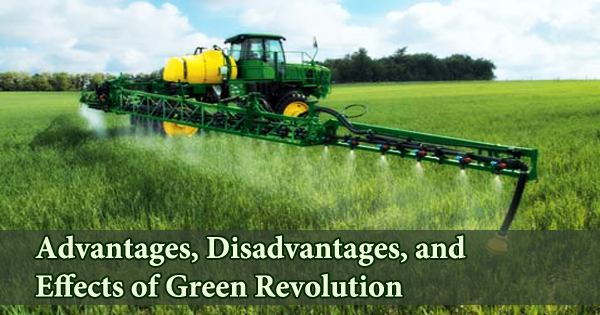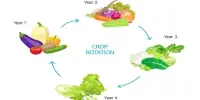The Green Revolution, sometimes known as the Third Agricultural Revolution, was a significant increase in food grain production (particularly wheat and rice) that began in the mid-twentieth century, thanks in large part to the introduction of new, high-yielding varieties into emerging countries. Between 1950 until the late 1960s, a series of research and technology transfer projects enhanced agricultural production in various parts of the world, with the late 1960s being the most significant. It was during this time that the country’s agriculture was turned into an industrial system, thanks to the introduction of modern tools and techniques such as the use of high-yielding variety seeds, tractors, irrigation infrastructure, pesticides, and fertilizers.
Chemical fertilizers, agrochemicals, and a controlled water supply (typically requiring irrigation) were all linked to it, as were modern methods of farming, such as mechanization. Mexico and the Indian subcontinent were the first places where it had spectacular success. To achieve their enormous yields, the new types require large amounts of chemical fertilizers and pesticides, prompting concerns about cost and potential environmental consequences. The key elements of the revolution include:
- Use of the latest technological and capital inputs;
- Adoption of modern scientific methods of farming;
- Use of high yielding varieties of seeds;
- Proper use of chemical fertilizers;
- Consolidation of landholdings.
New chemical fertilizers, herbicides, and insecticides were discovered by scientists, allowing crops to produce more nutrients and yield. In a speech on March 8, 1968, William S. Gaud, the administrator of the United States Agency for International Development (USAID), coined the term “Green Revolution.” The Green Revolution resulted in the development of high-yielding crops, particularly rice and wheat, as well as the use of controlled water sources, chemical fertilizers, and agriculture-based compounds to aid the growing process. During this time, new methods of farming, like as mechanization, were established, which supplanted previous technology.
Advantages of Green Revolution –
High yield per area, improved quality of crops, and controlled water flow for irrigation are only a few of the benefits of sharing technology in agriculture. Some of the advantages of the “Green Revolution” are stated below,
- More Crop Yield per Area: New farming methods, such as chemical fertilizers, tractors, and pesticides, have resulted in increased crop yield over a specific area. Today, 20% more crops are produced around the world than are necessary by the world’s population. This has only been feasible as a result of the Green Revolution’s changes.
- Consistent yield: Because of the Green Revolution, the yield has become more steady, making it more resistant to seasonal variations. Prior to the green revolution, crop yields were heavily dependent on seasonal weather, and even a little change in rain or other factors might drastically impact productivity. But, thanks to the green revolution, due to the adoption of new farming techniques and support systems, yield today is less dependent on climatic conditions.
- It may be helping to reduce the number of greenhouse gas emissions: In 2013, the Proceedings of the National Academy of Sciences of the United States published a study on the Green Revolution’s impact on greenhouse gas emissions. Without the gains in crop growth that occurred during this time, emissions might have been up to 7.4 Gt more than what was recorded through 2004. The high-yield approach to agriculture has a dramatic impact on how carbon cycles through the atmosphere.
- Poverty reduction: The Green Revolution eliminates poverty in the countries where it is implemented. New farming techniques are always generating new job opportunities in agriculture and allied industries. Furthermore, the rise in crop productivity aids in the home fight against famine.
- It causes a reduction in food prices for the global economy: Agribusiness markets are driven by supply and demand. When yields grow more constant, supply becomes more plentiful. High-yield crops generate more harvestable items, implying that more food is available to customers. This benefit lowers prices for everyone, while farmers profit more since they can produce more with less land. Even consumers in developing countries have better food access because of these technologies.
- Reduced the issues of deforestation on our planet: Although there may be concerns with deforestation in some regions of the world as a result of the Green Revolution’s methods depleting the soil’s nutrients, the impact of these contemporary techniques has helped the world protect itself from the growing need for more food. This benefit enables us to safeguard the environment while also meeting the needs of individual homes.
Disadvantages of Green Revolution –
Despite having numerous advantages, “Green Revolution” also has its own disadvantages as discussed below,
- It created a lack of biodiversity in the global cropland structures: The Green Revolution’s agricultural techniques may have helped to alleviate hunger in poor nations, but they also resulted in a substantial loss of agro-diversity and wild biodiversity throughout the world. This disadvantage exists because the methods rely on a small number of high-yield crops for production standards, employing just a few closely related species and decreasing the types of crops formerly linked with them, such as the more nutritious grain legumes. Chemical fertilizer usage has been linked to the decrease of some of the most vulnerable fish and animal species.
- It requires the use of non-sustainable agricultural methods: Almost all of the high-intensity agricultural output that happens as a result of Green Revolution technology and concepts uses nonrenewable resources. To get greater yields, people must employ agricultural machinery to manage their farms. This industry, too, has a requirement for transportation logistics.
- Health hazards: Humans are exposed to hazardous chemical fertilizers and pesticides during the Green Revolution, posing a health risk. Direct exposure to agricultural pesticides, along with a lack of safe farming methods, might result in some of the most fatal illnesses, such as cancer. Over 20,000 individuals are said to have died worldwide as a result of chemical overexposure and the failure to use masks.
- It encourages more resistance to pests, chemicals, and other hazards: Plants are developing resistance to the pesticides we employ to keep them under check. Pests are developing resistance to the chemical treatments used to keep them away from the crops we cultivate. If given enough time, nature will always adapt, which means it will need more chemicals and additional agents to attain the yields required for profitability. Because resistance levels have built up so efficiently, there may come a day in the near future when the existing set of pesticides and herbicides is no longer effective.
- Promotes monocropping: Instead of producing numerous crops on the same land and/or rotating crops on the land, the Green Revolution supports the agricultural practice of planting the same crop on the same ground in perpetuity. Pesticide seepage into adjacent soil, soil mineral loss, and, in certain circumstances, deforestation are all problems caused by monocropping.
Effects of Green Revolution –
Fertilizers were a big part of what made the Green Revolution feasible, and they permanently transformed agricultural methods since the high yield varieties created at the time couldn’t survive without them. Because of the complexity of food systems, assessing the effects of the Green Revolution on global food security is challenging. Irrigation was also a big part of the Green Revolution, and it forever altered the range of crops that could be cultivated.
Some of the effects of the Green Revolution are stated below:
- Increase in Production: The Green Revolution’s tactics produced very favorable growing conditions for the crop. Chemical fertilizers, insecticides, and other chemicals guarantee that the crop is less vulnerable to pests and can develop without interruption.
- Food Security: In nations where the Green Revolution is being practiced, increased agricultural output and crop resistance to changes in climate, pests, and other challenges has resulted in food security. Higher agricultural output means fewer people go to bed hungry and everyone’s nutritional needs are satisfied.
- Scientific Practices: The most significant consequence of the Green Revolution is the use of scientific rather than traditional agricultural practices. Instead of traditional farm seeds, farmers are now adopting High Yield Variety (HYV) seeds. Chemical fertilizers are also used instead of conventional fertilizers, which increases output.
- Industrial Development: The Green Revolution has resulted in industrial development, which has resulted in more employment and a boost to the economy. In the country where the green revolution is being implemented, industries manufacturing fertilizers, pesticides, agricultural machinery, and insecticides are established.
- Confident Farmers: Farmers are more confident than ever before since their production has grown increasingly independent of external influences as a result of global warming. Today’s farmer understands that by implementing innovative techniques, he will be able to produce high-quality crops that are free of pests and insects. Farmers’ confidence has risen dramatically as a result, allowing them to think outside the box.
Agriculture was severely confined to places with a substantial quantity of rainfall before to the Green Revolution, but irrigation allows water to be stored and transferred to drier areas, allowing more land to be used for agricultural production and improving overall crop yields. The Green Revolution’s increased output is credited with preventing global starvation and feeding billions of people. The Green Revolution ushered in a sea change in the global agriculture business. It greatly aided developing countries by increasing their production and enhancing the quality of their produce. Still, if we are to keep up with the times, we must enhance the Green Revolution on a regular basis.
















